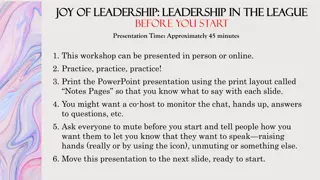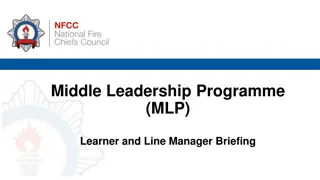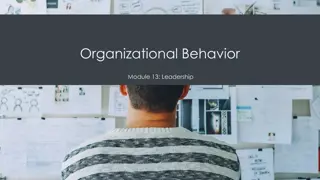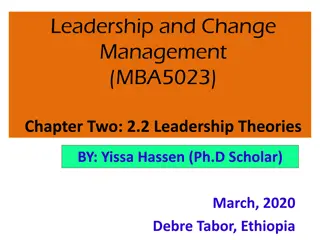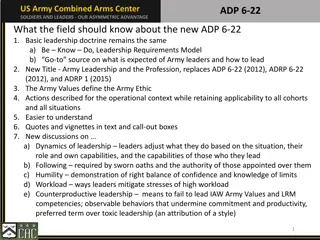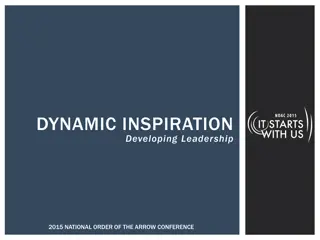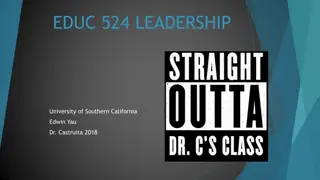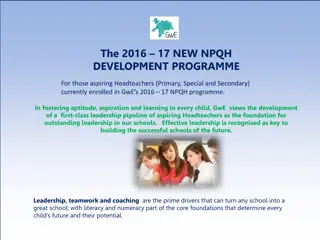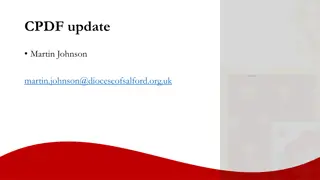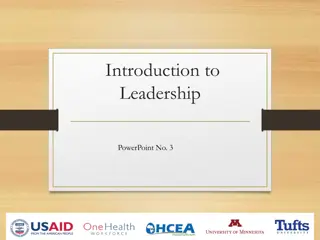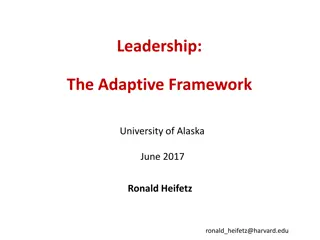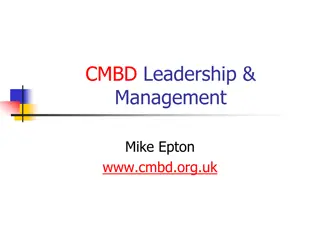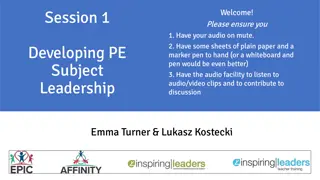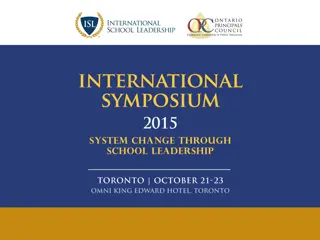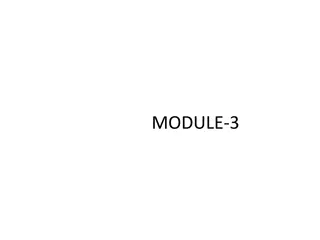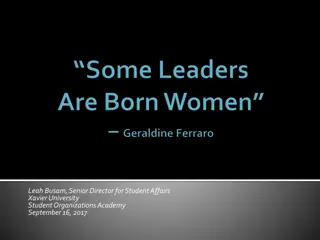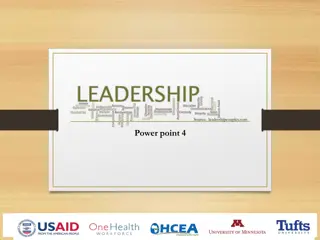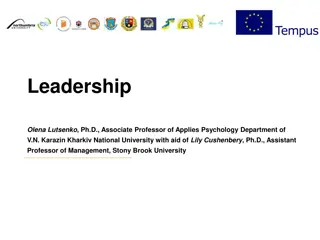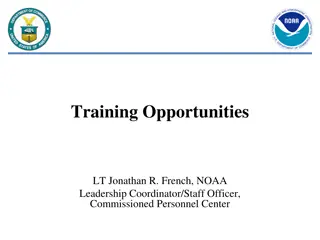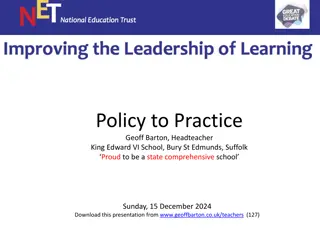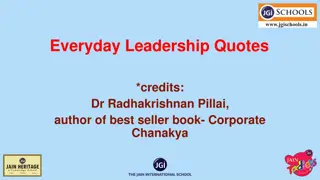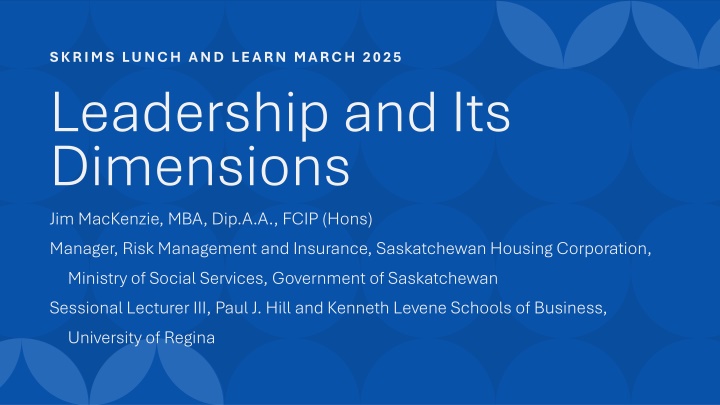
Exploring Leadership Dimensions in Risk Management Workshop
"Join the SKRIMS Lunch and Learn event in March 2025 to delve into the various dimensions of leadership, including shared leadership, transactional leadership, task-oriented versus people-oriented approaches, and path-goal leadership. Discover how leadership relates to risk management and enhance your leadership skills. Attend sessions led by Jim MacKenzie, a seasoned professional in risk management and insurance, and expand your understanding of effective leadership practices."
Download Presentation

Please find below an Image/Link to download the presentation.
The content on the website is provided AS IS for your information and personal use only. It may not be sold, licensed, or shared on other websites without obtaining consent from the author. If you encounter any issues during the download, it is possible that the publisher has removed the file from their server.
You are allowed to download the files provided on this website for personal or commercial use, subject to the condition that they are used lawfully. All files are the property of their respective owners.
The content on the website is provided AS IS for your information and personal use only. It may not be sold, licensed, or shared on other websites without obtaining consent from the author.
E N D
Presentation Transcript
SKRIMS LUNCH AND LEARN MARCH 2025 Leadership and Its Dimensions Jim MacKenzie, MBA, Dip.A.A., FCIP (Hons) Manager, Risk Management and Insurance, Saskatchewan Housing Corporation, Ministry of Social Services, Government of Saskatchewan Sessional Lecturer III, Paul J. Hill and Kenneth Levene Schools of Business, University of Regina
AGENDA What is leadership? Shared Leadership Transactional Leadership Tasks versus People Path-Goal Leadership Attributes of Leaders Authentic Leadership Kouzes/Posner Leadership Model How Does This Relate to Risk Management? 2
WHAT IS LEADERSHIP? - "Influencing, motivating, and enabling others to contribute toward the effectiveness of the organization" - McShane & Warner - Many of us lead in some manner every day o You don't have to have a leadership role to be a leader 3
SHARED LEADERSHIP - You perform this if you believe leadership is a role you take and it doesn't matter if it's in your job description "Managing up", "managing out" - 4
TRANSACTIONAL LEADERSHIP - Transformational leadership o Poising an organization to be able to perform (and endure) major change - Managerial leadership o Leading to maintain current (presumably functioning) practices and policies 5
TASKS VERSUS PEOPLE - Some leaders focus on tasks getting things done, performing functions Others focus on people building and maintaining relationships - Both methods are effective, and good leaders move between them - Stereotype: men tend toward functional leadership, women toward people-based - 6
PATH-GOAL LEADERSHIP - Very much about "using the right tool for the job" Style of leadership depends on the goal trying to be attained - Four styles of leadership: directive, supportive, participative, achievement-oriented - 7
WHAT ATTRIBUTES DO LEADERS NEED? Research indicates: Personality (extravert, conscientious) - Internally consistent, complex self-concept - Leadership motivation - Drive - 8
MORE LEADERSHIP ATTRIBUTES... - Integrity Knowledge of the Business - Cognitive and Practical Intelligence - Emotional Intelligence - 9
AUTHENTIC LEADERSHIP - These leaders believe they should be their true selves In order to be yourself as a leader, you really have to know yourself o They work hard to ensure they maintain self- awareness - 10
KOUZES/POSNER LEADERSHIP MODEL - Model the Way Inspire a Shared Vision - Challenge the Process - Enable Others to Act - Encourage the Heart - 11
MODEL THE WAY - Set standards for yourself and make sure your team knows what they are "Do as I do" - what you say will always be in alignment with what you do - 12
INSPIRE A SHARED VISION - Appreciative Inquiry what could things be? Building the will in the team to make these things happen - 13
CHALLENGE THE PROCESS - Can we do better? Are there risks we should be taking? oFinally! Risk management :). Intelligent experimentation; learn from experience, iteratively improve - 14
ENABLE OTHERS TO ACT - Building trust and relationships and leveraging them Developing others building their skills and competencies - 15
ENCOURAGE THE HEART - Recognition, recognition, recognition :). Make sure your team feels appreciated. - Help them to build a sense of connection to your organization. - 16
KOUZES/POSNER WINDUP - Again, good leaders use all of these styles oWe will tend to live in one or two of these styles much of the time they're our "native land" styles oWe need the others sometimes, too 17
SO WHAT ABOUT RISK MANAGEMENT? - Good leadership makes risk management easier, better oLets us build trust Getting the resources we need Giving us the influence to make good risk-based decisions 18
THE IRONY OF RISK MANAGEMENT - We're a peripheral (non-core) requirement, but we "grease the rails" to let everything else flourish For much of what we do... our organizations don't need us until they NEED us - Being organizational thought leaders and people leaders will help us to maintain the profile we need to help our organizations to thrive - 19
Thank you JIM MACKENZIE 306-787-4456 JIM.MACKENZIE2@GOV.SK.CA / JIM.MACKENZIE@UREGINA.CA

